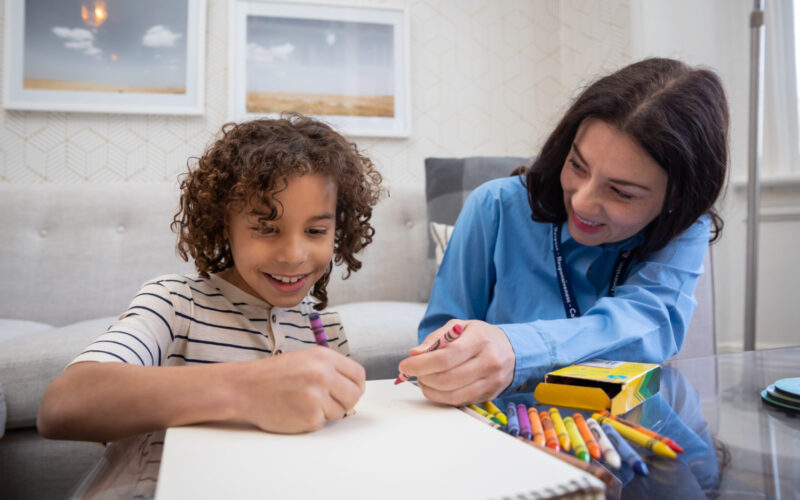How to Encourage Healthy Sleep
OCTOBER 13, 2020
A healthy sleep pattern is when a child can sleep comfortably, soundly, and consistently through the night. It typically involves a nighttime routine that begins prior to bedtime and continues as the child falls asleep. It is common for children with an Autism Spectrum Disorder (ASD) to experience various challenges with maintaining a healthy sleep pattern.
WHY IS HEALTHY SLEEP IMPORTANT?
Adequate sleep is essential for daily functioning. Common sleep challenges in children with ASD include the inability or resistance to fall asleep, night terrors, waking through the night, and early morning awakenings. Some factors that may interfere with sleep include seizures, anxiety, hyperactivity, challenges with transitions, medication side effects, and difficulty digesting food that results in nighttime discomfort. Continuous problems with sleep can affect the health and quality of life of both children and their caregivers. More specifically, sleep problems can worsen child daytime behaviour and increase stereotypic or repetitive behaviour. This in turn can contribute to greater caregiver sleep disturbance and daily stress. Using behavioural strategies to encourage healthy sleep can improve child and caregiver sleep habits, improve quality of life, and reduce caregiver stress. It is important to seek medical attention for your child if they are experiencing any form of pain or discomfort due to these challenges.
Good Sleep Hygiene
- Make sure the sleep environment is comfortable
- The room should have a comfortable temperature, and be dark and quiet
- Find out what your child is most comfortable with (e.g., tight or loose pyjamas, light or heavy bed covers)
- Make regular bedtime routines that are short, predictable and expected
- Include soothing activities (e.g., story time)
- Avoid stimulating activities such as tv, music, electronic games, bright lights, or physical activities like running or jumping right before bed
- Find out which activities are calming vs. stimulating for your child. For example, if your child gets too excited taking a bath, move this activity earlier in the day
- Start the routine about 15-30 minutes before bedtime. Avoid routines longer than 60 mins.
- You can use a visual schedule to help your child see the routine in order
- Be consistent with bedtime
- Choose a bedtime and keep it the same for both weekdays and weekends
- If your child takes more than one hour to fall asleep, move bedtime 30 mins to one hour later
- If your child naps, keep nap times on a regular schedule. Wake your child up before 4PM or it will be difficult for them to sleep during bedtime. As they get older, only allow a nap if they are sick
- Time meals appropriately
- Heavy snacks late at night should be avoided
- Light snacks with carbohydrates (cheese, crackers, fruit), may help your child fall asleep more easily
- Physical activity
- Being physically active during the day can help your child fall asleep more easily at night
Strategies to Help Your Child Fall Asleep on Their Own:
- Rocking Chair Method: Stay in the room next to your child but avoid making eye contact or interacting with them. When they fall asleep you can leave the room. Move your chair closer to the door each night until you are out of the room.
- Checking-in: Let your child sleep alone in his/her room. Go back in if they become upset. Comfort your child but the interaction should be brief and minimal. Extend time between visits if they become upset again.
Strategies for Night Waking:
- The Bedtime Pass: Your child can “trade in” a certain number of passes to leave their room throughout the night (e.g., to get a hug or a glass of water). After they use their passes they need to stay in their room for the rest of the night. Slowly fade the number of passes available.
- Mannion, A., Leader, G. (2014). Sleep problems in autism spectrum disorder: A literature review. Review Journal of Autism and Developmental Disorders 1, 101–109.
- Reynolds, A. M., Malow, B. A. (2011). Sleep and autism spectrum disorders. Pediatric Clinics, 58 (3), 685–698.


